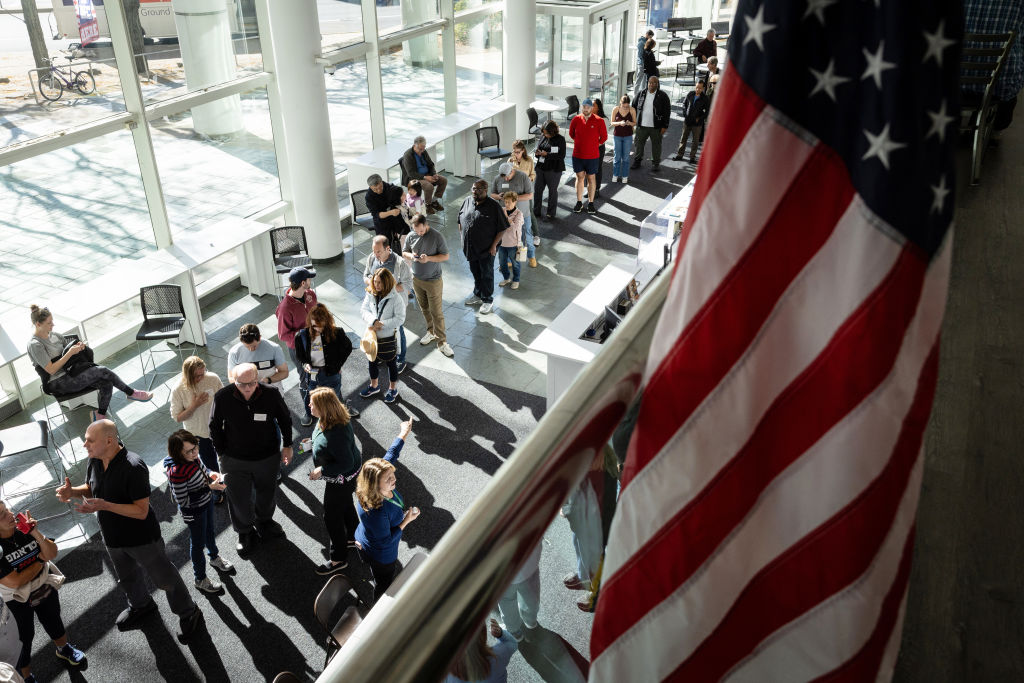
Earlier this month, Vice President J. D. Vance posted on X, “New England’s six states vote about 40 percent Republican and have literally zero Republican representatives in Congress.”
Vance is not the first to identify this problem. But a simple solution exists: elect the House of Representatives by proportional representation (PR). In a PR system, a party with 40 percent of the votes gets 40 percent of seats.
Finally, a reason to check your email.
Sign up for our free newsletter today.
Conservatives have long been skeptical of PR, and of election reform more generally. But it’s a smart way to ensure that Republicans in blue states get their voices heard.
What would PR look like in New England? One approach is to combine the six states’ 21 districts into one district, with 21 seats. Then ask voters which party they like more: Democrats, Republicans, or any other party that might be on the ballot. Finally, allocate seats to parties in proportion to their vote shares. Since 40 percent of 21 is 8.4, Republicans would get about eight seats.
What about those “other parties?” Wouldn’t PR let all kinds of radicals into Congress?
Not necessarily. Research shows that the causal arrow tends to run the other way: ruling parties adopt PR because they need it for some reason, not because those parties want to rip themselves apart. One reason is to avoid being electorally wiped out under prior “winner-take-all” systems. Another is to split emerging alliances between liberals and socialists.
What about the ability to vote for a candidate, not a party? This isn’t necessarily a problem, either. Most PR systems let voters pick individual candidates. The simplest form counts a vote for a person as a vote for his party, too.
What about local representation? Wouldn’t treating all of New England as one district destroy this principle? Again, not necessarily. “All politics is local,” maintained Democratic House Speaker Tip O’Neill. Research finds that parties in PR systems nominate candidates because they are locally popular.
Some might argue that states cannot be combined for determining representation in Congress. The apportionment clause of the U.S. Constitution provides that “Representatives . . . shall be apportioned among the several States which may be included within this Union, according to their respective Numbers.” Much clearly hinges on the meaning of “apportioned.” I and others have speculated that this part of the Constitution closes off a single congressional district crossing state lines.
If the law is an obstacle, one workaround would be to use PR within states. This would not do much for Vermont, which has just one seat, but Connecticut and Massachusetts have five and nine seats, respectively. Based on Vance’s numbers, PR would give two seats to Connecticut Republicans and three or four to their friends in Massachusetts. This is better than the zero representation Vance notes.
Conservative skepticism of election reform has been grounded in experience. After ranked-choice voting handed a win in Alaska’s 2022 Senate race to Lisa Murkowski over Donald Trump-endorsed Kelly Tshibaka, Republicans saw leftist plots in both RCV and open primaries. Many supporters of both reforms used the Alaska result as proof that their preferred change “moderates” politics. Such messaging probably reinforced a view that all election reform is really about splitting the Republican Party.
But some electoral reforms are better for conservatives, and they should avoid making blanket judgments. The dynamic that Vice President Vance identifies has a solution. Yes, the details would need working out, but it’s a conversation worth having.
Photo by John Moore/Getty Images
City Journal is a publication of the Manhattan Institute for Policy Research (MI), a leading free-market think tank. Are you interested in supporting the magazine? As a 501(c)(3) nonprofit, donations in support of MI and City Journal are fully tax-deductible as provided by law (EIN #13-2912529).
Source link

















